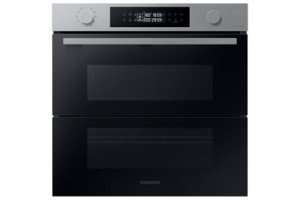Understanding In-Built Ovens: A Comprehensive Guide
In the world of modern kitchen style, built-in ovens have risen to prominence, blending functionality with aesthetics. Their seamless combination into cabinetry provides a streamlined look, making them increasingly preferred by house owners and cooking lovers alike. This short article checks out the numerous features, advantages, installation considerations, and popular kinds of in-built ovens, along with responding to some regularly asked concerns.
What is an In-Built Oven?
An inbuilt oven, frequently referred to as a built-in oven, is a kitchen appliance designed to be set up within kitchen cabinetry, instead of as a freestanding unit. please click the up coming website page permits a more sophisticated and organized kitchen design while taking full advantage of offered space. Built-in ovens been available in different sizes, styles, and performances to suit various cooking needs and choices.
Advantages of In-Built Ovens
The advantages of installing an inbuilt oven extend beyond simple looks. Here are some essential advantages:
- Space Efficiency: Built-in ovens are created to fit snugly within kitchen cabinetry, making them perfect for compact spaces. This style leaves counter area free for meal preparations.
- Personalized Design: Homeowners can select from a range of styles and finishes to complement their kitchen decoration, improving the general look of the space.
- Enhanced Functionality: Many built-in ovens are equipped with innovative cooking innovation, offering functions such as convection cooking, steam cooking, and self-cleaning functions, which enhance cooking performance and adaptability.
- Ergonomic Height: Installing an oven at eye level decreases the requirement to flex down, making it much easier to examine food and handle dishes without straining the back.
- Improved Safety: Built-in ovens can incorporate security functions such as cool-to-the-touch surface areas and kid locks, which can be especially important in homes with kids.
Kinds Of In-Built Ovens
Inbuilt ovens come in several types to deal with different cooking requirements. Below is a contrast of typical types:
| Type | Description | Pros | Cons |
|---|---|---|---|
| Single Oven | A traditional oven that cooks from one space | Space-efficient, easier to use | Restricted cooking capacity |
| Double Oven | Two separate oven compartments for diverse cooking | More cooking area, versatility | Higher expense, takes up more space |
| Compact Oven | Smaller ovens suitable for little kitchen areas or as a second oven | Space-saving, versatile | Minimal capacity |
| Steam Oven | Utilizes steam for cooking, preserving wetness | Healthier cooking alternatives | Generally more expensive |
| Wall Oven | Built into the wall, available in single or double setups | Conserves flooring area | Installation intricacy |
Functions to Consider When Choosing an In-Built Oven
When picking an inbuilt oven, numerous features need to be taken into account:
- Size: Measure your kitchen area and cabinetry to ensure the oven fits correctly. Common widths for built-in ovens range from 24 inches to 30 inches.
- Cooking Methods: Determine the cooking techniques you choose-- traditional, convection, or steam. This choice will significantly affect your cooking style and the oven's abilities.
- Energy Efficiency: Look for ovens with high energy effectiveness scores. These designs conserve cash on utility bills and are better for the environment.
- Control Options: Evaluate the control user interfaces. Some designs use smart functions permitting remote cooking control and monitoring via mobile phone apps.
- Security Features: Ensure the oven comes with essential security features, specifically if kids will exist. Lock-out mechanisms and cool outsides are important enhancements.
Setup Considerations
Appropriate setup is crucial for the optimal efficiency of an in-built oven. Here are some installation factors to consider:
- Ventilation: Ensure appropriate ventilation to remove smoke and smells. Seek advice from local building codes regarding kitchen ventilation requirements.
- Electrical Requirements: Built-in ovens usually need a devoted electrical circuit. Have a competent electrician assess price and safety.
- Professional Installation: While DIY may be tempting, hiring a professional installer makes sure the oven is fitted safely and securely.
Frequently Asked Questions About In-Built Ovens
What is the difference in between a built-in oven and a freestanding oven?
Built-in ovens are created to be installed within cabinetry, whereas freestanding ovens can stand alone and typically combine oven and cooktop in a single home appliance.
Can I set up a built-in oven myself?
While DIY setup is possible, it is typically advised to employ an expert to make sure safety and adherence to regional building regulations.
Are in-built ovens worth the investment?
Yes, built-in ovens typically offer improved looks, advanced performance, and effective usage of area compared to traditional freestanding models.
What upkeep do built-in ovens require?
Routine cleansing, checking seals, and guaranteeing appropriate ventilation are important upkeep tasks. It's advisable to follow the producer's directions for particular care guidelines.
How much does an in-built oven usually cost?
Costs can differ significantly based upon functions, brand, and type, but built-in ovens typically range from ₤ 700 to ₤ 3,000 or more.
Built-in ovens present a mix of beauty and usefulness, making them an exceptional choice for both brand-new buildings and kitchen remodels. Comprehending the types, functions, and installation factors to consider can empower house owners to make informed decisions about which in-built oven best matches their needs. As culinary patterns develop and kitchen style becomes more sophisticated, inbuilt ovens will continue to play a considerable role in contemporary kitchens, combining cooking with design and performance.

